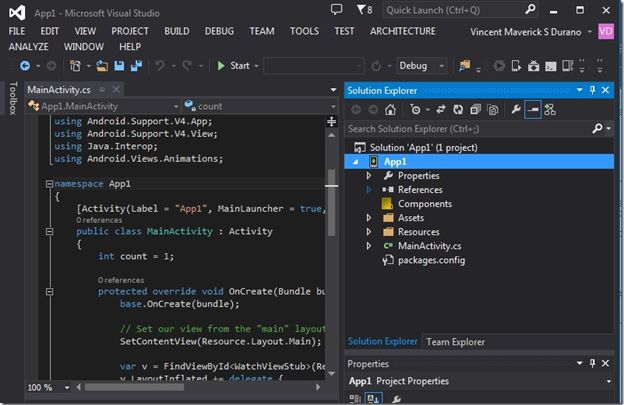

This code declaratively defines the visual hierarchy of the application, which consists of a TabBar containing two ShellContent objects. In AppShell.xaml, remove all of the template code and replace it with the following code: In Solution Explorer, in the Notes project, double-click AppShell.xaml to open it:

For more information about user interaction, see Responding to user interaction in the Xamarin.Forms Shell Quickstart Deep Dive. When the button is pressed, a web browser is launched and the page represented by the URI argument to the OpenAsync method is displayed. This code defines the OnButtonClicked event handler, which is executed when the Learn more Button is pressed. Launch the specified URL in the system browser. Public partial class AboutPage : ContentPageĪsync void OnButtonClicked(object sender, EventArgs e) In, remove all of the template code and replace it with the following code: using System In Solution Explorer, in the Notes project, double-click to open it: Save the changes to AboutPage.xaml by pressing CTRL+S. For more information about creating the user interface, see User interface in the Xamarin.Forms Shell Quickstart Deep Dive. The two Label objects and Button are vertically laid out in a StackLayout, with the Image and StackLayout being vertically laid out in a Grid. This code declaratively defines the user interface for the page, which consists of an Image, two Label objects that display text, and a Button. In AboutPage.xaml, remove all of the template code and replace it with the following code:

In Solution Explorer, in the Notes project, double-click AboutPage.xaml to open it: This will add a new page named AboutPage to the Views folder. In the Add New Item dialog, select Visual C# Items > Xamarin.Forms > Content Page, name the new file AboutPage, and click the Add button: In Solution Explorer, in the Notes project, select the Views folder, right-click, and select Add > New Item. When the Delete Button is pressed the OnDeleteButtonClicked event handler is executed, which deletes the file, provided that it exists, and removes any text from the Editor. When the Save Button is pressed the OnSaveButtonClicked event handler is executed, which saves the content of the Editor to the file. When the page constructor is executed the file is read, if it exists, and displayed in the Editor. This code defines a _fileName field, which references a file named notes.txt that will store note data in the local application data folder for the application. Void OnDeleteButtonClicked(object sender, EventArgs e) Void OnSaveButtonClicked(object sender, EventArgs e)įile.WriteAllText(_fileName, editor.Text) String _fileName = Path.Combine(Environment.GetFolderPath(), "notes.txt") Įditor.Text = File.ReadAllText(_fileName) Public partial class NotesPage : ContentPage Save the changes to NotesPage.xaml by pressing CTRL+S. The two Button objects are horizontally laid out in a Grid, with the Editor and Grid being vertically laid out in a StackLayout. This code declaratively defines the user interface for the page, which consists of an Editor for text input, and two Button objects that direct the application to save or delete a file. In NotesPage.xaml, remove all of the template code and replace it with the following code: In Solution Explorer, in the Notes project, double-click NotesPage.xaml to open it: This page will be the main page in the application. This will add a new page named NotesPage to the Views folder.

In the Add New Item dialog, select Visual C# Items > Xamarin.Forms > Content Page, name the new file NotesPage, and click the Add button: In Solution Explorer, in the Notes project, add a new folder named Views. In Solution Explorer, in the Notes project, delete GettingStarted.txt. In Solution Explorer, in the Notes project, delete the following folders (and their contents): NET Standard library that gets created, see Anatomy of a Xamarin.Forms Shell application in the Xamarin.Forms Shell Quickstart Deep Dive. When the project has been created, close the GettingStarted.txt file.įor more information about the. In the New Mobile App dialog, select the Tabbed template, and click the Create button: Using a different name will result in build errors when you copy code from this quickstart into the project. The C# and XAML snippets in this quickstart requires that the solution and project are both named Notes.


 0 kommentar(er)
0 kommentar(er)
